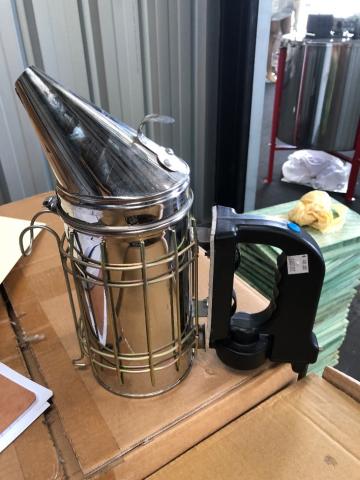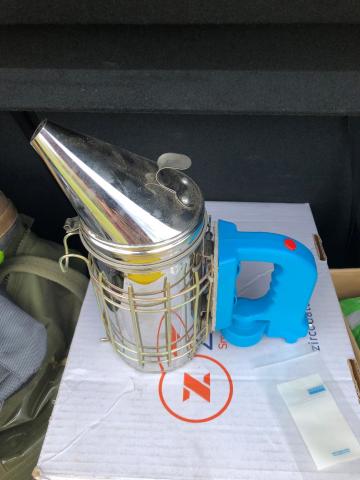Purpose
This safety alert is about the health risks from imported battery-operated bee smokers that contain asbestos in the insulating board between the battery compartment in the handle of the device and the metal smoker.
Background
The devices were imported from China by three separate beekeeping equipment retailer businesses based in Queensland. Tests confirmed asbestos was present.
Product description
The battery-operated bee smokers are designed to emit smoke used for beekeeping (apiculture). Two models with different coloured handles have been found to have asbestos in the insulating board. See Figures 1, 2 and 3.
Asbestos bee smokers - model one

Asbestos bee smokers - close up

Asbestos bee smokers - model two

Risk control
These battery-operated bee smokers should not pose an immediate hazard or measurable health risk through normal use, as the asbestos is firmly bonded to the matrix of the insulating board. However, the insulating board could be damaged and release asbestos dust and debris.
Anyone with one of these bee smokers should immediately stop using it, wrap it in sturdy plastic or put it in a sturdy plastic bag, seal it with tape and dispose of it at a hazardous waste facility. Your local council will be able to provide you with information on the location of hazardous waste facilities.
The three identified Queensland based importers/suppliers have complied with statutory direction to stop the import, supply and storage of the smokers and have agreed to contact customers directly to arrange a refund. However, as the smokers were sold over the counter, not all customers will be contactable. The suppliers have also agreed to post information on their social media sites.
To reduce the risk of importing or supplying products containing asbestos, read Preventing goods or materials containing asbestos being supplied to workplaces in Queensland (PDF). Information includes:
- how asbestos importation is regulated at the Australian border and which products might contain asbestos
- what businesses must do to ensure imported products do not contain asbestos
- verifications for Australian importers or consumers to show imported materials do not contain asbestos
- acceptable standards for testing if materials contain asbestos.
Importers should also be familiar with the information on the Department of Immigration and Border Protection asbestos webpage at https://www.abf.gov.au/importing-exporting-and-manufacturing/prohibited-goods/categories/asbestos
For more information
To reduce the risk of importing or supplying products containing asbestos, read the fact sheet Preventing goods or materials containing asbestos being supplied to workplaces in Queensland
The content of this safety alert has been informed by the Heads of Workplace Safety Authorities Imported Materials with Asbestos Working Group.